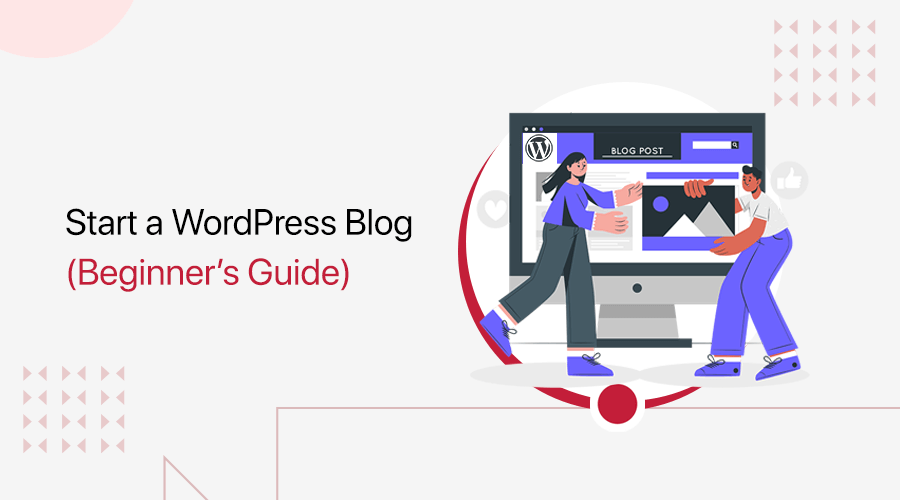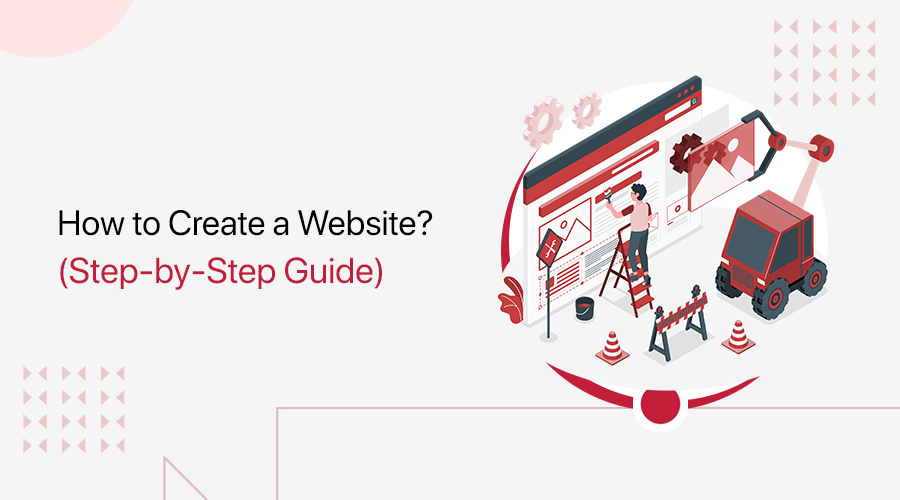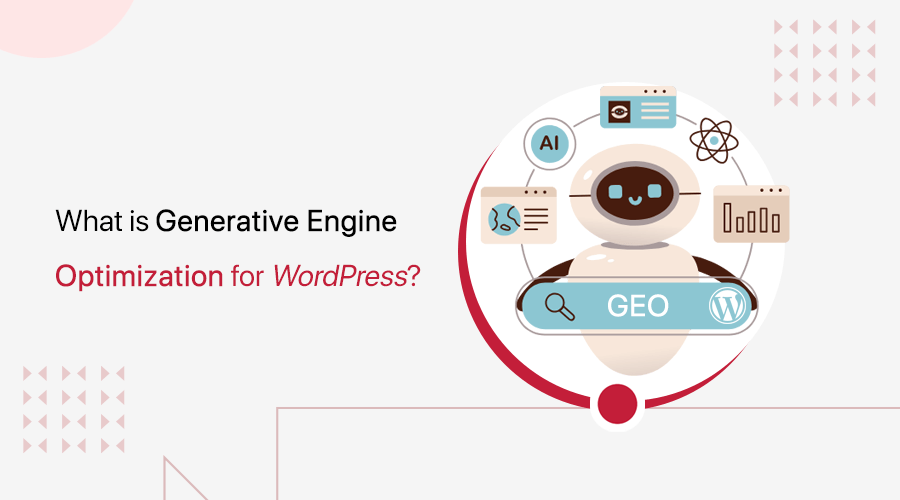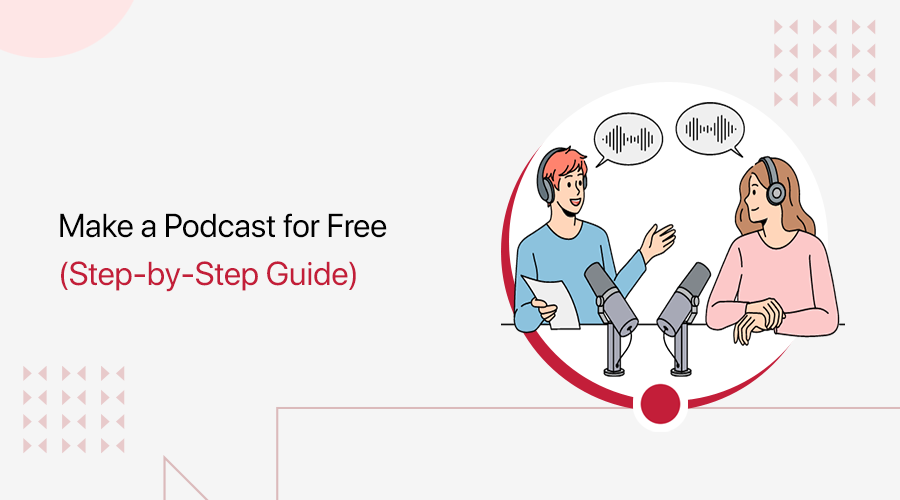
Do you want to learn how to make a podcast for free? If yes, then this article is just for you!
Podcasts are more popular than ever, and starting one is easier than you think. It has become a powerful medium for sharing ideas, connecting with audiences, and exploring topics you’re passionate about.
And the best part? You don’t need a massive budget or a professional studio to start. With the right steps, you can create a podcast for free.
This guide will walk you through the entire process. You’ll learn how to plan, record, edit, and publish your podcast without spending a dime.
Ready to dive in? Let’s get started!
Should You Really Start a Podcast? (5 Top Reasons)
Starting a podcast might seem like a big step, but it can be incredibly rewarding.
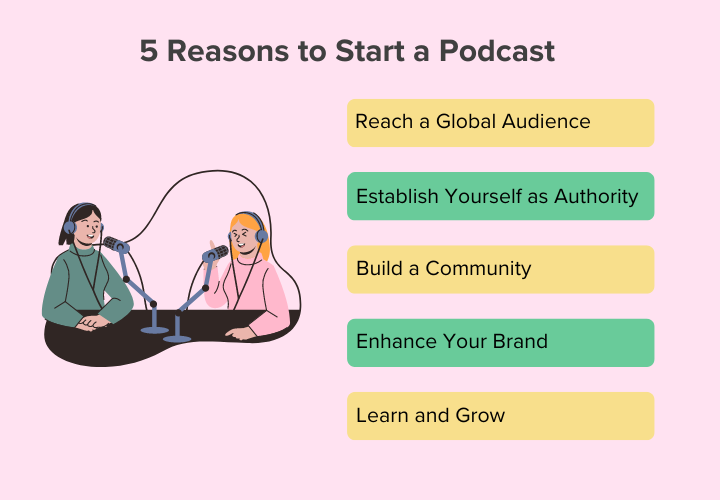
Here are five top reasons why you should consider diving into the world of podcasting:
- Reach a Global Audience: Podcasts connect globally, sharing expertise, stories, or hobbies with diverse listeners, building a dedicated following.
- Establish Yourself as an Authority: Showcases expertise, establishing you as a thought leader, boosting credibility and networking opportunities.
- Build a Community: You can create intimacy through your voice, fostering a loyal community engaging via comments, social media, and live events.
- Enhance Your Brand: A podcast complements your brand, attracting new listeners preferring audio content, adding versatility and engagement.
- Learn and Grow: Improves speaking, editing, and marketing skills. Also, expands knowledge through research and guest interviews, fostering growth.
Hence, starting a podcast can open many doors and offer numerous benefits. With these compelling reasons in mind, it’s clear why many people are choosing to step into the world of podcasting.
Do you want to learn more about podcasts in detail? Then, be sure to check out our article on what is a podcast for comprehensive guidance.
How to Make a Podcast for Free? (Easy Step-by-Step Guide)
Whether you’re a seasoned storyteller or a curious beginner, this guide will walk you through the process of creating your very own podcast. Let’s go!
Step 1: Plan Your Podcast
Planning your podcast is essential for creating content that resonates with your audience. Follow these steps to effectively plan your podcast:
i) Choose Your Topic
Select a niche or subject that you are passionate about and that will interest your target audience. Consider your expertise and what unique perspective you can offer.
ii) Define Your Audience
Understand who your listeners will be. Define their demographics, interests, and what they hope to gain from your podcast. And tailor your content to meet their needs and preferences.
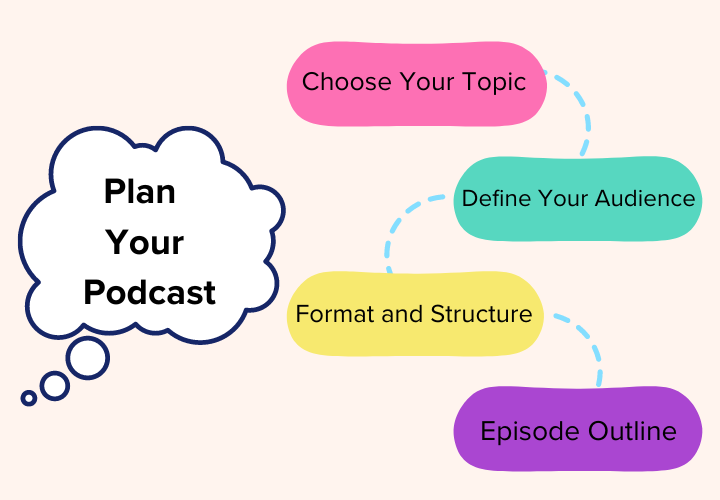
iii) Format and Structure
Decide on the format of your podcast episodes. Consider whether you will have solo episodes, interviews, roundtable discussions, or a combination. Determine the length of each episode and how frequently you will release new episodes.
iv) Episode Outline
Outline the content of your episodes. Create a rough structure or script for each episode, including key points, segments, and any guest interviews or features. This will help you stay organized and ensure your episodes flow smoothly.
Planning your podcast sets a solid foundation for creating engaging and cohesive content that will attract and retain listeners.
Step 2: Gather Your Equipment
Before you start recording your podcast, it’s important to gather the right equipment.
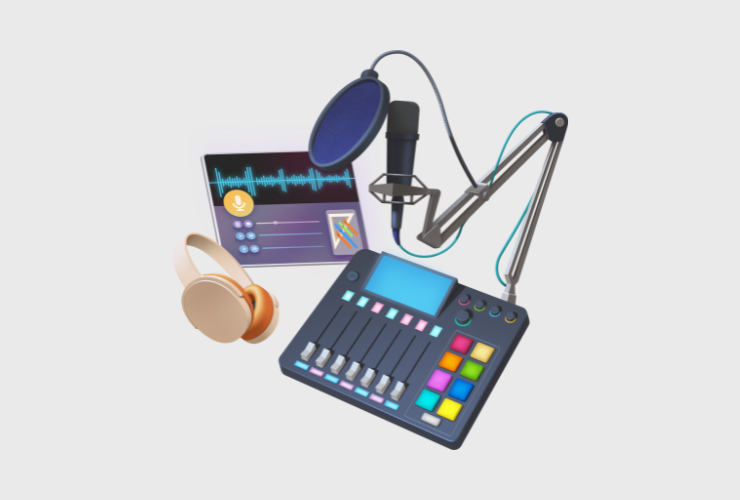
Here’s what you’ll need:
- Microphone: Choose a budget-friendly microphone that suits your recording environment (USB microphones are a good start).
- Headphones: Invest in good-quality headphones to monitor your audio while recording.
- Recording Software: Use free software like Audacity for recording your podcast.
Gathering the right equipment ensures that your podcast sounds clear and professional from the start. With these essentials in place, you’ll be ready to move on to recording and editing your podcast episodes.
Step 3: Record & Edit Your Podcast
Recording and editing your podcast is where your content comes to life.

Follow these steps to ensure a smooth recording and polished final product:
- Setting Up: Find a quiet space with minimal background noise. Consider using blankets or pillows to dampen echoes.
- Recording: Use your chosen software to record your episodes. Speak clearly and maintain a consistent volume.
- Editing: Edit out mistakes, long pauses, or unwanted sections using your editing software. Enhance audio quality by adjusting levels and adding music or effects if you want.
These steps will help you lay the foundation for creating a professional and engaging podcast without breaking the bank. With practice, you’ll refine your skills and deliver compelling content with each new episode.
Step 4: Choose the Right Podcasting Platform
With the initial steps done, it’s time to choose the right podcasting platform to host and distribute your podcast. As this is the crucial step to reaching your audience effectively.
Here, we’ve listed out some of the popular ones that you can consider:
1. WordPress.org
WordPress.org is a versatile platform you host yourself, known for its flexibility and many plugins. It’s great for podcasts because you can customize your site a lot and add different features easily.
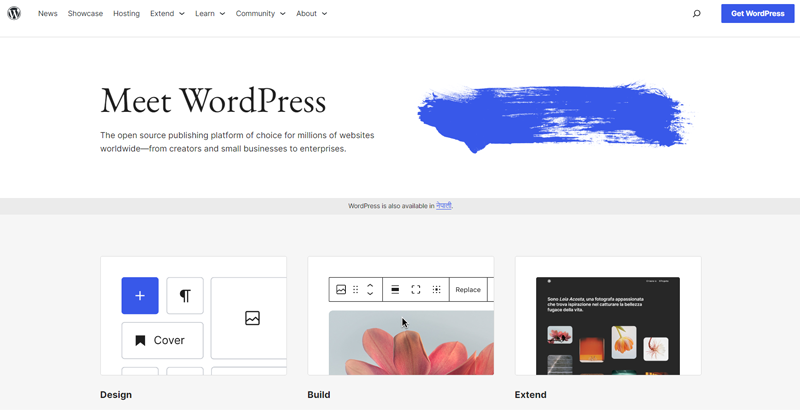
You can use plugins like Seriously Simple Podcasting and PowerPress Podcasting to publish and share your podcasts without much hassle. This makes it suitable for beginners and experienced podcasters.
But, setting up your own hosting can be tricky if you’re new. You also need to handle updates and backups yourself, which requires some technical knowledge.
Pricing:
WordPress is a free website builder, allowing you to start building your podcast site as soon as you install it.
However, there may be costs if you opt for premium plugins or themes to add advanced features.
Additionally, you’ll need to choose a hosting provider to make your podcast website accessible to everyone. Hosting options like Bluehost can start as low as $2.45 per month.
For more information, check out our article on what WordPress is. You can also explore our comparison article on WordPress.org vs WordPress.com to understand their differences better.
2. Spotify
Spotify offers a huge audience base with millions of active users worldwide. As a result, this helps your content reach a diverse audience and attract new listeners.

For podcasters, Spotify features personalized recommendations and discovery algorithms. This analyzes listener preferences to provide tailored podcast suggestions. Further, increasing the likelihood of your podcast being recommended to users interested in your niche.
Pricing:
You can sign up for Spotify for free using your email. Alternatively, you can upgrade to the premium version starting at $2.99 per month for a single account, which includes ad-free music, offline playback, and on-demand listening.
3. YouTube
YouTube offers podcasters incredible opportunities to reach a vast audience and engage with listeners, enhancing the podcasting experience with its video content and features.
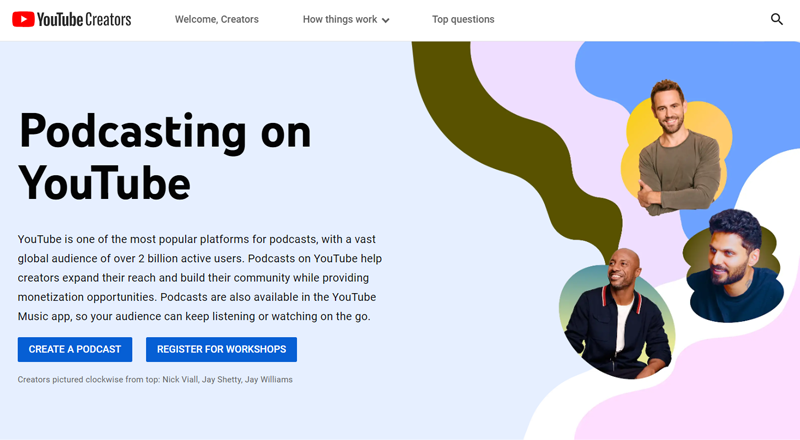
It allows you to create video podcasts, complementing your audio with visuals. As a result, this helps to capture viewers’ attention and convey information more effectively.
Pricing:
Uploading your podcast on YouTube is free. You can create a YouTube channel and start uploading your podcast episodes at no cost.
Our Recommendation: WordPress.org
Are you confused about choosing from the above platforms?
Well, for beginners and those looking for flexibility and customization, we recommend WordPress.org.
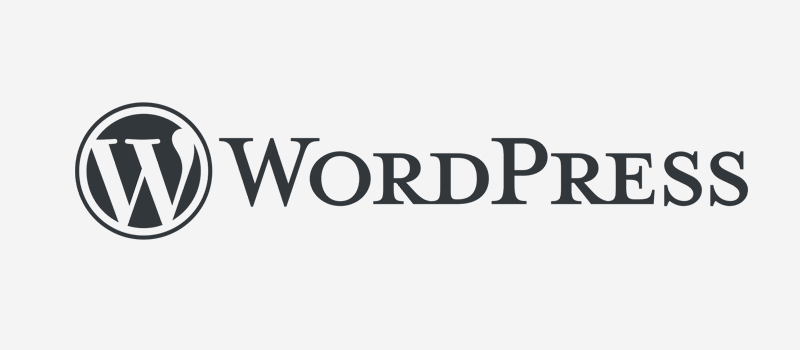
It allows you to maintain ownership of your content, and integrate with various plugins for podcast management.
What’s more, you can grow your audience through your website or blog. On top of that, WordPress.org also offers robust SEO capabilities, helping potential listeners discover your podcast through search engines.
Hence, choosing WordPress.org as your podcasting platform sets a solid foundation for building and expanding your podcasting presence online.
Step 5: Host Your Podcast on WordPress.org
As mentioned earlier, we recommend WordPress.org to host your podcast. So, follow as we guide you through:
I) Purchase Domain, Hosting, and Set Up WordPress
Purchasing a Domain Name
Your domain name is your website’s address on the internet (e.g., www.sitenerdy.com).

Choosing a memorable and relevant domain name is essential for your podcast’s identity and accessibility.
- Keep It Simple and Relevant: Pick a name that is easy to remember and reflects your podcast’s purpose.
- Check Availability: Use domain search tools like Namecheap or GoDaddy to see if your desired domain name is available.
- Register Your Domain: Once you find an available domain name, register it through a domain registrar.
For more guidance, check our article on the best domain name generators to find a good domain for your podcast.
In fact, many hosting providers also offer domain registration as part of their packages.
Choosing a Hosting Provider
Your hosting provider stores your website’s files and makes them accessible on the internet. For WordPress.org, choose a hosting service that supports WordPress and ensures reliable performance.
- Consider WordPress-Specific Hosting: Some popular options for WordPress hosting include Kinsta, Cloudways, Bluehost, WP Engine, etc. They offer optimized performance and security features.
- Look for Reliability and Support: Choose a hosting provider with a strong uptime record and responsive customer support.
- Evaluate Pricing and Plans: Compare pricing tiers to find one that fits your budget and traffic needs. Many providers offer introductory discounts.
Our Recommendation: Bluehost
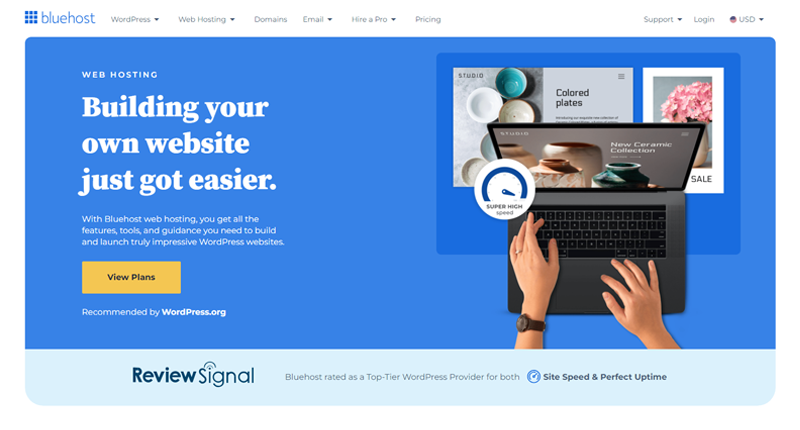
For those looking for an excellent all-in-one solution, we recommend Bluehost. It only offers robust hosting but also includes a free domain for the first year. This can significantly ease your website setup process and keep your costs down.
For more guidance, check out our article on what to look for in a web hosting company.
Setting Up WordPress
Now, your next task is to install the WordPress software. Many web hosts offer one-click WordPress installation, making it quick and easy. Once WordPress is installed, you can customize your website using themes and plugins.
Regardless of whatever hosting service you use, you can install WordPress in three simple steps. As an example:
- Access your hosting account.
- Look for a ‘WordPress Installation’ option in the Control Panel.
- Follow the directions exactly as written. You’ll have WordPress up and running in no time.
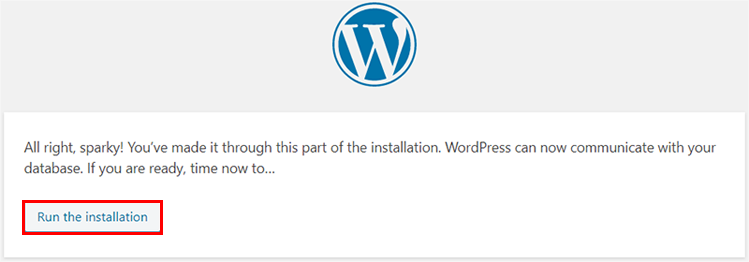
Shortly after installation, you’ll receive access credentials via email from the hosting provider. With that, you can quickly log in to your WordPress dashboard.
Congratulations, you’ve now chosen a domain name, selected a web hosting provider, and installed WordPress!
II) Choose an Elegant Podcast Website Theme
Now, your next task is to choose an elegant WordPress theme suitable for your podcast website.
As selecting the right theme is crucial for the success of your podcast website. A well-designed theme not only makes your site look appealing but also enhances usability and engagement.
For more guidance, you can check out our article on how to choose a WordPress theme.
Meanwhile, for this tutorial, we’ve chosen the Astra theme. It’s highly recommended for podcast websites due to its flexibility, performance, and ease of use.

If you want to know more, then check out our detailed article on the Astra theme review.
Now, let’s see how we can install and use the Astra theme for the podcast website.
Installing and Activating Astra WordPress Theme
So, go to your WordPress dashboard, and navigate to the ‘Appearance’ > ‘Themes’ page.
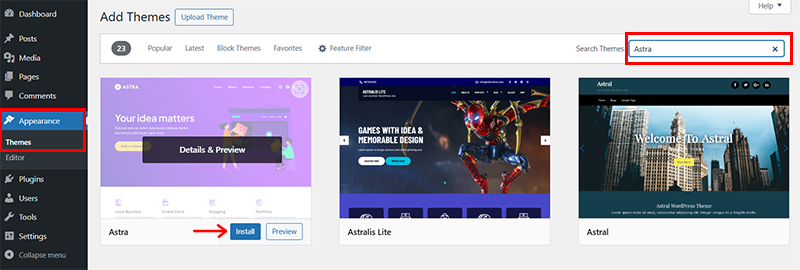
Next, click the ‘Add New’ button and type ‘Astra’ in the search bar.
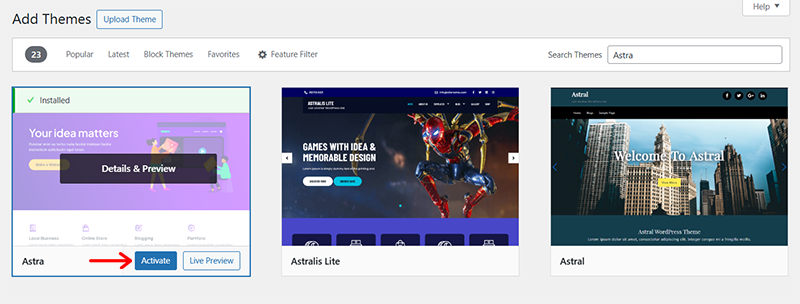
Once you find the Astra theme, click on the ‘Install’ button, shortly followed by the ‘Activate’ button.
For more detailed guidance, you can check out our article on how to install a WordPress theme.
Import Your Chosen Template For Your Podcast
Once your theme is successfully activated, you’ll see the Thank You notification. Also, you can see the ‘Let’s Get Started with Starter Templates’ button on the same popup. Click on it.
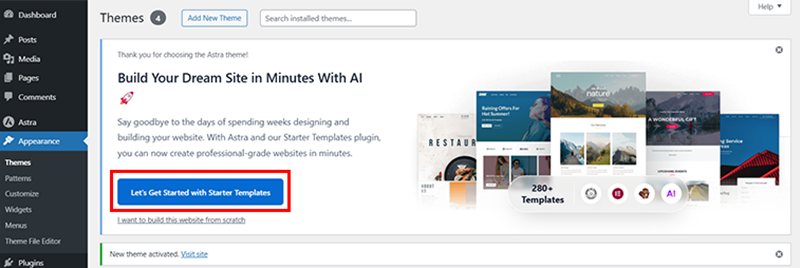
Next, you’re provided 2 options whether to choose ‘AI Website Builder’ or pick ‘Classic Starter Templates’.
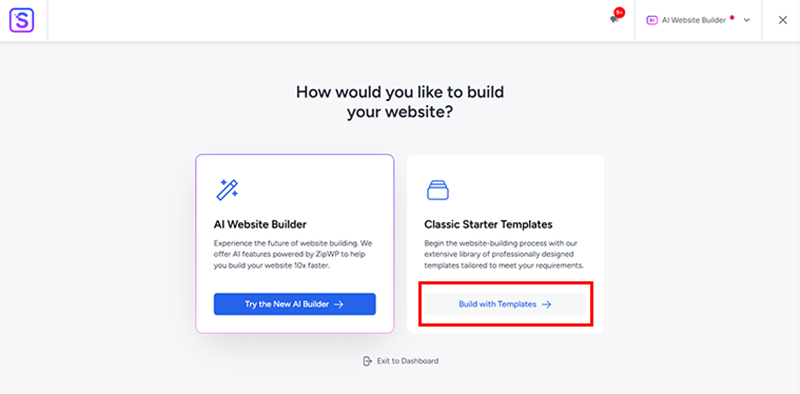
For now, we choose classic starter templates and click on the ‘Build with Templates’ option.
Next, you need to search for the kind of template you want for your podcast. For instance, let’s suppose we’re making a podcast for creative minds. Now, type ‘Creative Podcaster’ in the search bar.
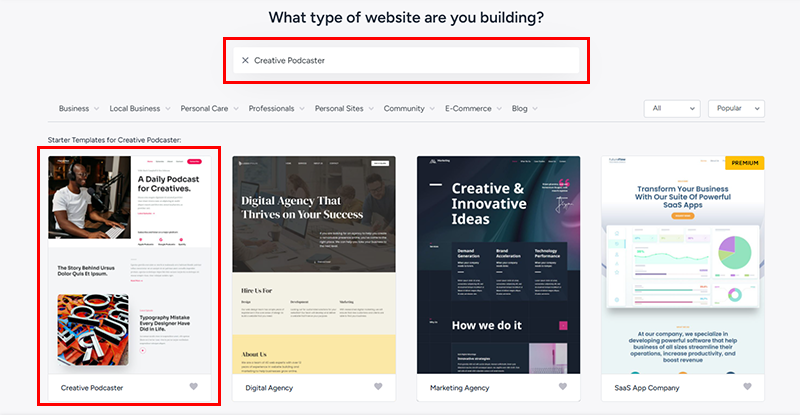
Now, once you locate the demo template, click on it to proceed forward.
Further, you can do the necessary customization here such as choosing the Site Logo, Font Pair, Color Palette, etc. And click on the ‘Continue’ option.
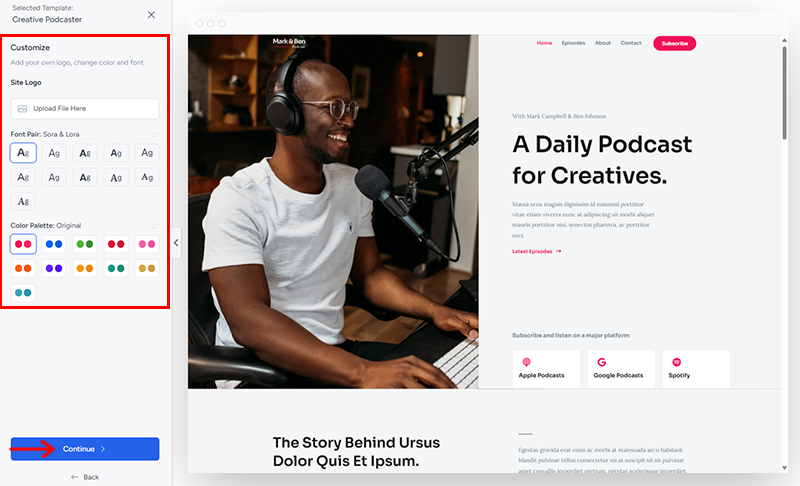
Further, Astra requests certain details. You can quickly finish them out and click on the ‘Submit & Build My Website’ option.
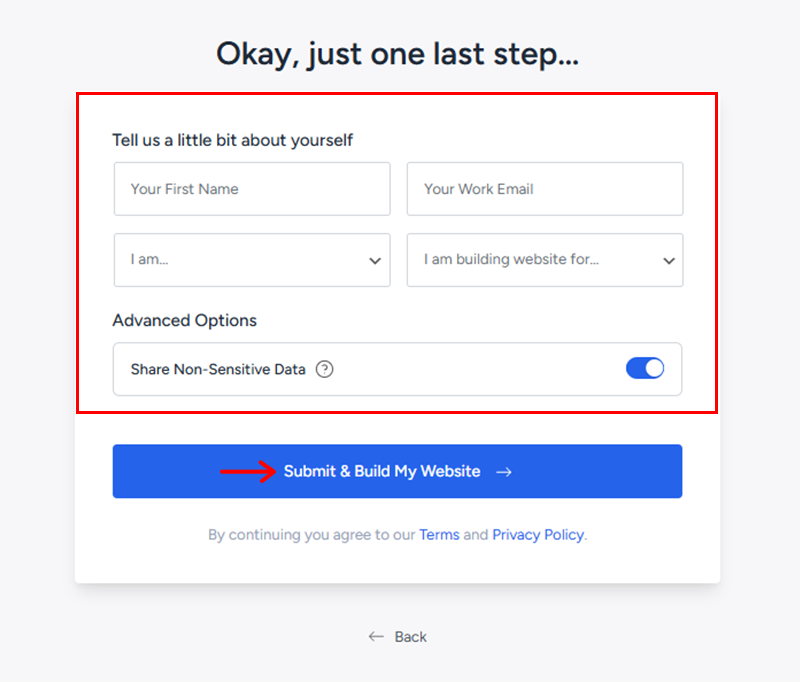
Once you’re done with adding details, you’ll see the Congratulations page for successfully importing the website.
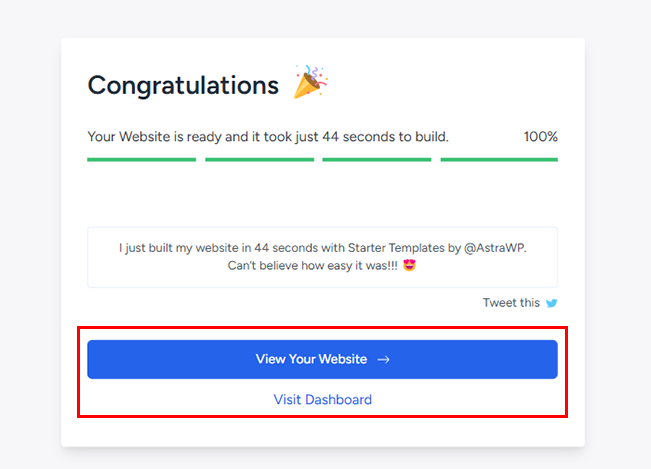
Next, you can click on the ‘View Your Website’ option to preview your imported website or click on the ‘Visit Dashboard’ option to do further customization.
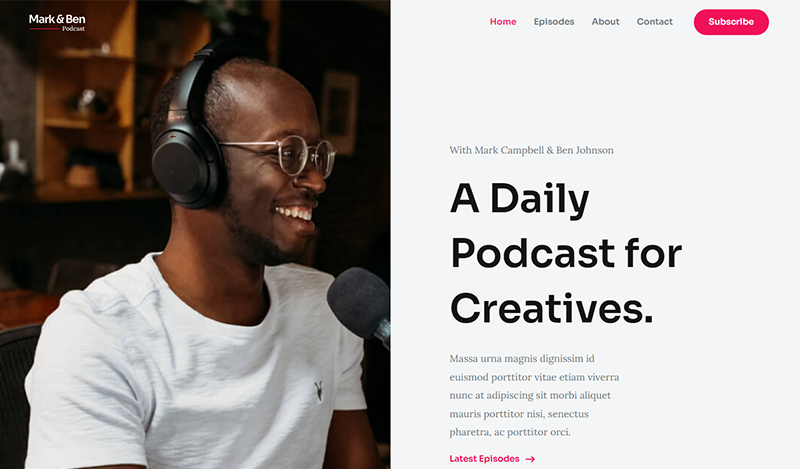
III) Choose a Podcasting Plugin
Now, to transform your WordPress website into a fully functional podcast, you’ll need the right plugin. A podcast plugin provides you the ability to manage and grow your podcast effectively.
Here’s how you can choose the right suitable podcast plugin for your website. They are:
- Features: Ensure the plugin supports RSS feed generation, episode management, and integration with major podcast directories.
- Ease of Use: Look for a user-friendly interface that simplifies episode uploading, show notes, and feed management.
- Compatibility: Check compatibility with your theme and other plugins to avoid conflicts and ensure smooth functionality.
- Customization Options: Choose a plugin that lets you customize the podcast player, episode display, and feed settings.
- Analytics and Tracking: Consider plugins with analytics to track downloads, listener metrics, and audience demographics for better insights.
- Support and Updates: Select a plugin that’s regularly updated and supported, ensuring it works with the latest WordPress versions.
- Cost: Evaluate free versions and consider premium upgrades based on whether the additional features meet your needs and budget.
Considering the above factors, we recommend going for the Seriously Simple Podcasting WordPress plugin.
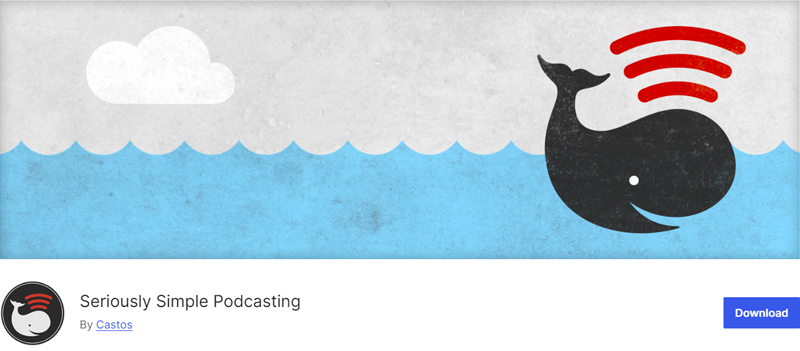
It’s a popular and lightweight podcast plugin designed to integrate seamlessly with WordPress, ensuring simplicity and speed. What’s more, it’s totally free to use.
Installing & Setting Up Your Podcast Plugin
From your WordPress dashboard, you can quickly install the Seriously Simple Podcasting WordPress plugin. For that, go to ‘Plugins’ > ‘Add New’. Next, enter ‘Seriously Simple Podcasting’ in the search box.
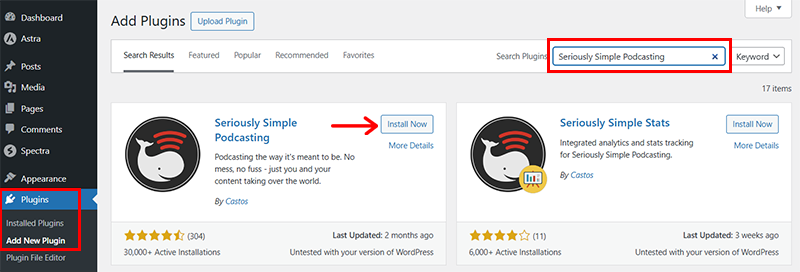
When you find the plugin, click ‘Install Now’, followed by the ‘Activate’ button.
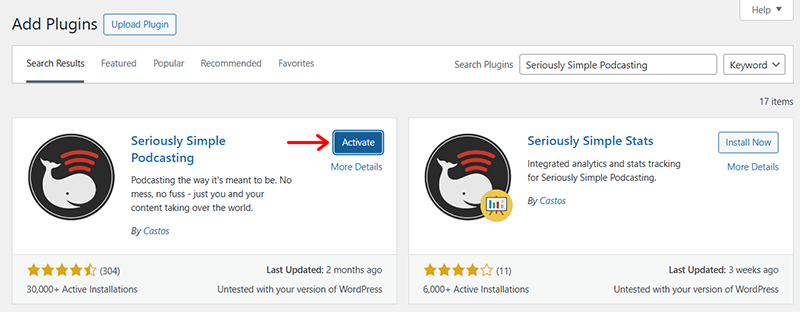
For more detailed guidance, you can check out our article on how to install a WordPress plugin.
Following that, you’ll see the following Welcome page. You can fill in the details one-by-one. Or always return to it later, for which click on the ‘Skip Setup’ option.
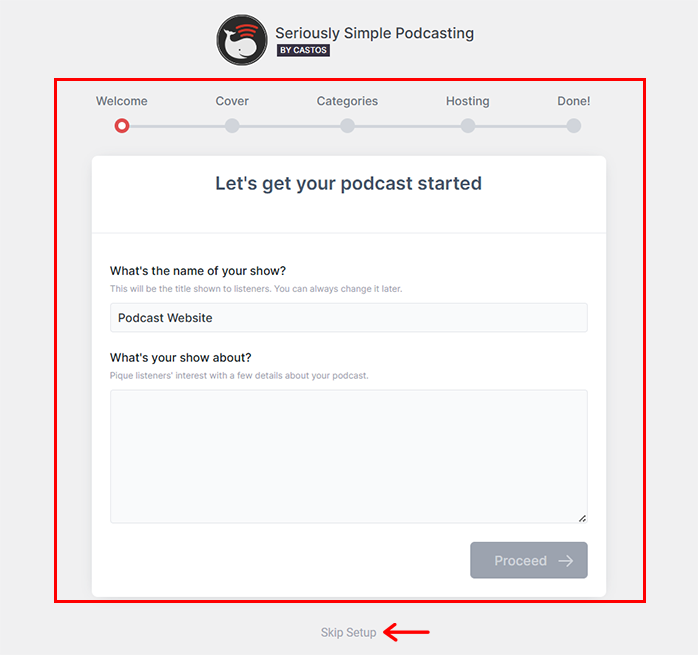
IV) Configuring the Plugin & Uploading Episodes
On successful activation, you’ll see the new menu ‘Podcasting’ added to your WordPress dashboard.
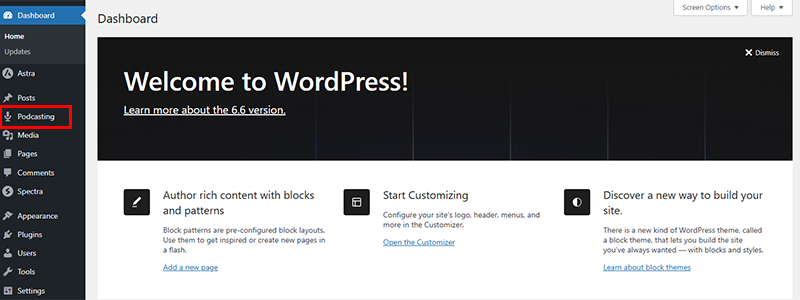
Configuring the Plugin
Now, on clicking ‘Podcasting > Settings’, you’ll find the following several settings options.
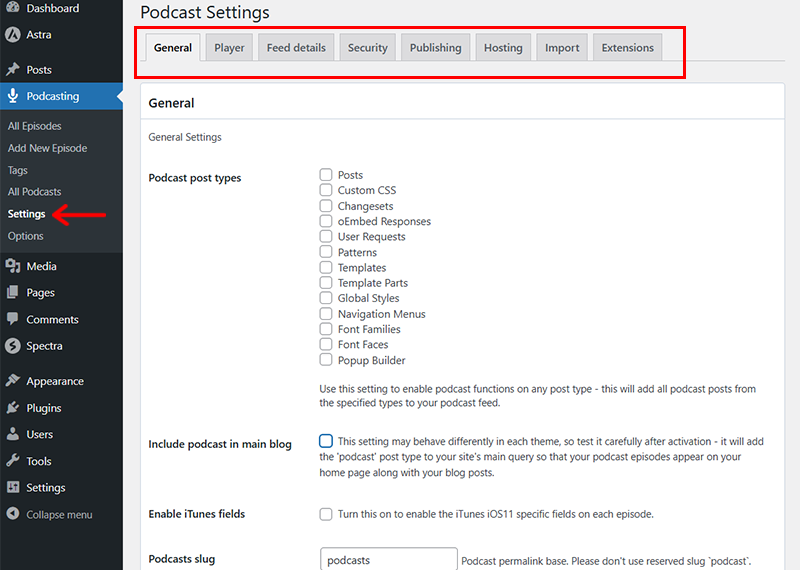
Here’s what you can do with it:
- General: Manage podcast post types and settings. Including adding iTunes-specific fields, customizing the podcast slug, and choosing whether to include episodes in your main blog.
- Player: Adjust the media player’s location, style, visibility, and functionality. Including options for player mode, subscribe URLs, metadata display, and custom colors.
- Feed Details: Set up your podcast’s RSS feed, including title, description, cover image, categories, owner details, explicit content settings, and more.
- Security: Password protect your podcast’s RSS feed, restricting access to authorized users only.
- Publishing: Configure external feed URLs, complete feed settings, and podcast pages. Ensuring your podcast is correctly distributed to various platforms.
- Hosting: Manage media hosting settings if using Seriously Simple Hosting, ensuring seamless integration with your WordPress site.
- Import: Import episodes from external podcast RSS feeds, allowing easy migration of existing podcasts into Seriously Simple Podcasting.
- Extensions: Explore and enable additional features through extensions. Enhancing functionality with tools like stats, transcripts, and speaker support.
Once you’re done with configuring the settings, you can click on the ‘Save Settings’ option at the bottom.
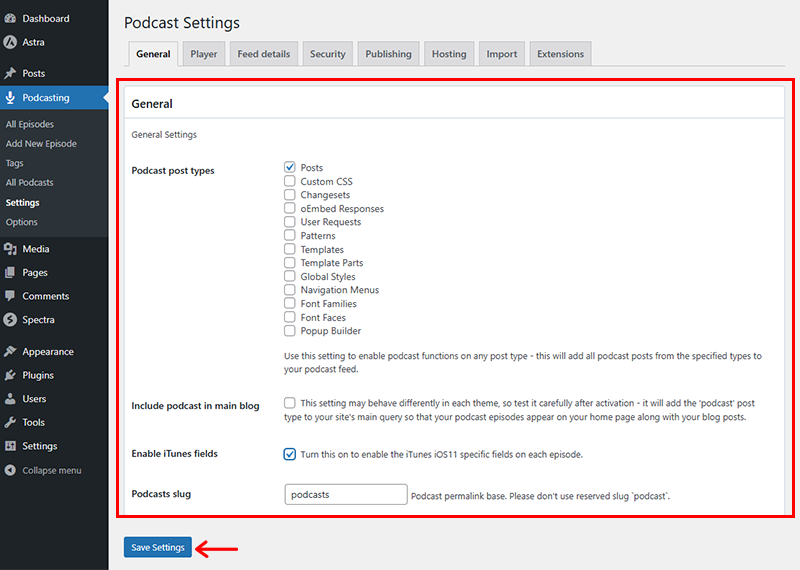
For more detailed information, you can refer to the dSeriously Simple Podcasting documentation on the settings overview.
Uploading & Managing Episodes
Next, you need to upload the episodes that you’ve previously recorded. For that, go to the ‘All Episodes > Add New Episode’. Or, you can also directly click on the ‘Add New Episode’ option.

Once done, you’ll see the editor panel as shown on the screen.
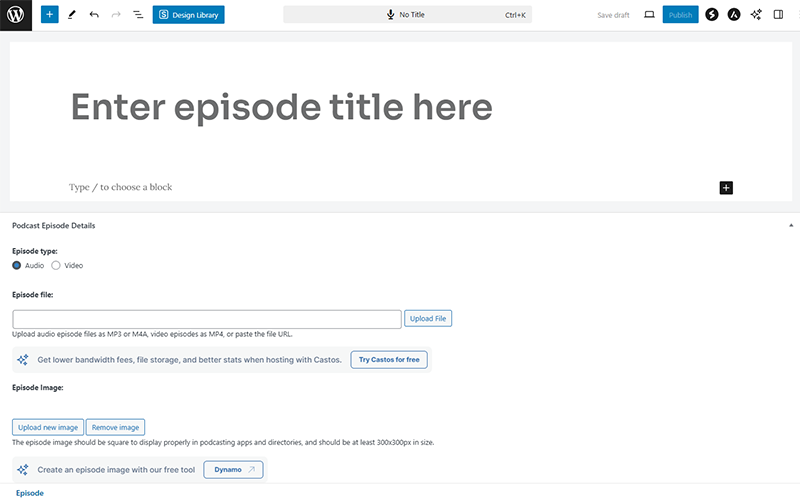
Now, start by adding the Episode Title. For instance, here we’ve given it as “Tech-Ed Revolution: The Future of Learning”.
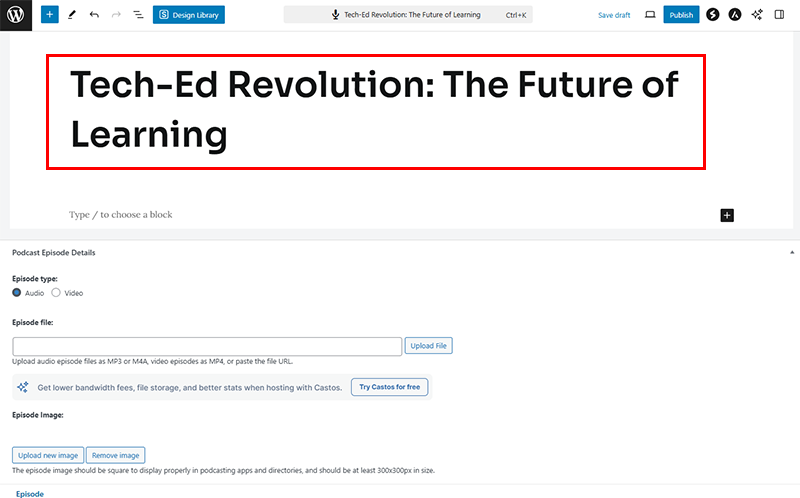
Next, specify the podcast ‘Episode type’ whether audio or video. Then, upload the previously recorded and edited file from the ‘Upload File’ option.
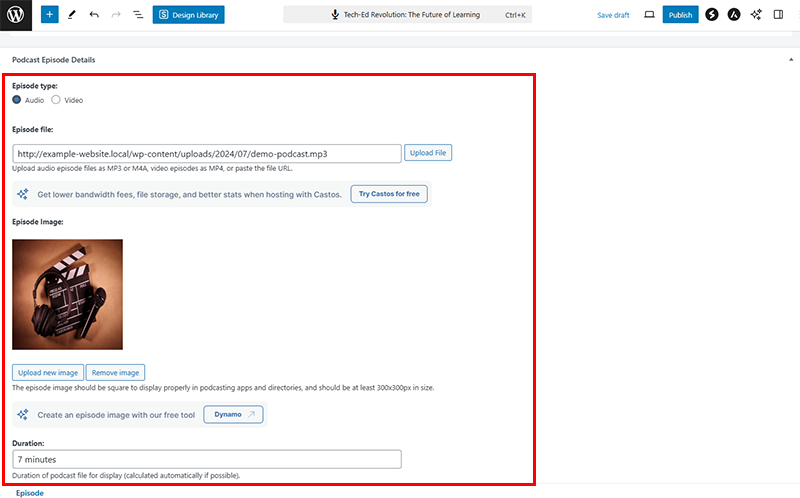
Likewise, you can also add a precise ‘Episode Image’ and also specify the duration of the podcast.
Once done, hit the ‘Publish’ button on the top right corner.
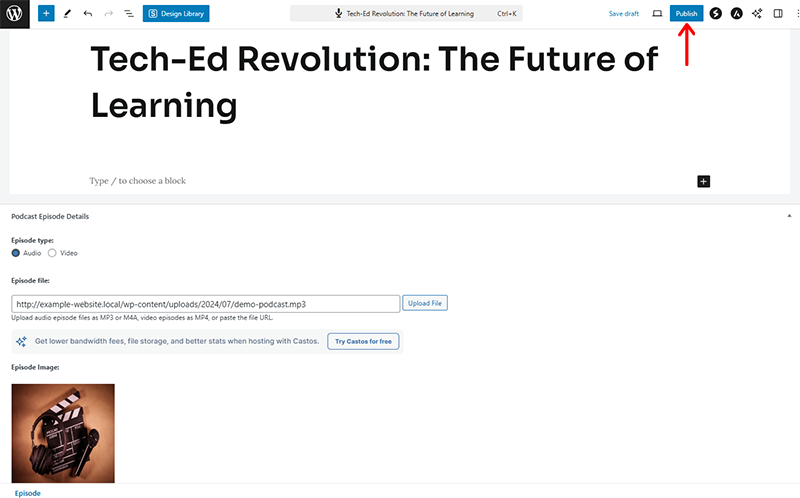
With that, you’ll see your podcast is live on your website. Now, to give a particular space for your episodes, copy the published episode address link via the ‘Copy’ button.
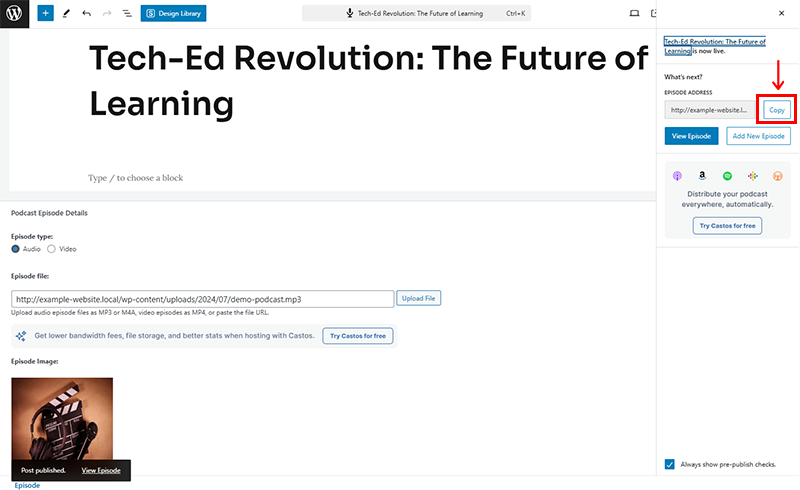
Following that, navigate to the ‘Pages > Episodes’ on your WordPress dashboard. (If you already have a theme installed, or say don’t have an Episodes page, then you can easily create one via Pages > Add New’.)

So, once you’re there, paste the previously copied episode address link and hit the ‘Publish’ button.
Now, if you preview your website, then you can find your podcast episode right on the ‘Episodes’ menu.
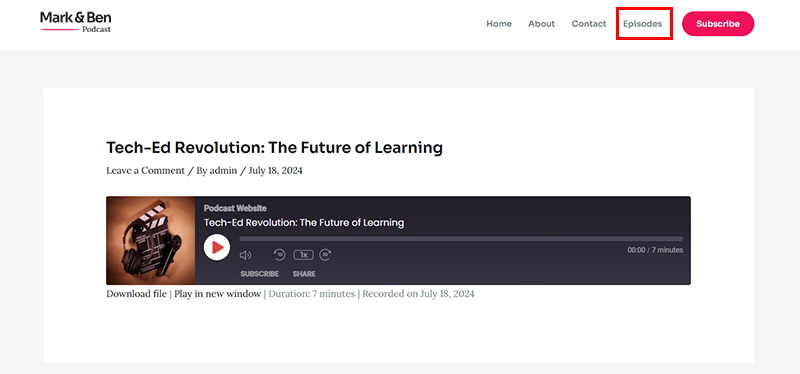
From here, people can download the file, play in a new window, check out duration, and so much more.
For more detailed guidance, check out the official documentation on using Seriously Simple Podcasting.
Step 6: Launch Your Podcast Website
Launching your podcast website is an exciting step that brings your project to life. You can follow the below steps to ensure a successful launch:
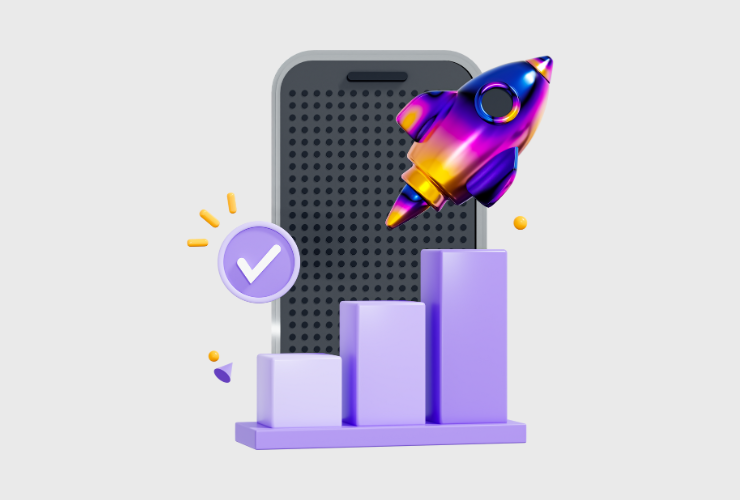
- Finalize Your Content: Make sure all your episodes are recorded, edited, and uploaded to your website. Prepare any additional content like show notes, blog posts, and episode descriptions if needed.
- Test Your Website: Before going live, test your website thoroughly. Check all links, ensure the podcast player functions correctly. And verify that your episodes are accessible.
- Promote Your Launch: Announce your podcast launch on your social media channels, email newsletters, and any other platforms where you have a presence. Create a buzz around your launch date to attract initial listeners.
- Submit to Directories: Don’t forget to submit your podcast to major directories like Apple Podcasts, Google Podcasts, etc. This will help you reach a wider audience from the start.
- Engage with Your Audience: Encourage feedback and interaction from your listeners. Respond to comments, emails, and social media messages to build a loyal community around your podcast.
Launching your podcast website is just the beginning. With a solid promotion strategy and active engagement, you’ll start attracting listeners and growing your audience from day one.
Step 7: Maintain & Grow Your Podcast
Last but not least, you need to maintain and grow your podcast. For that, it requires consistent effort and strategic planning.
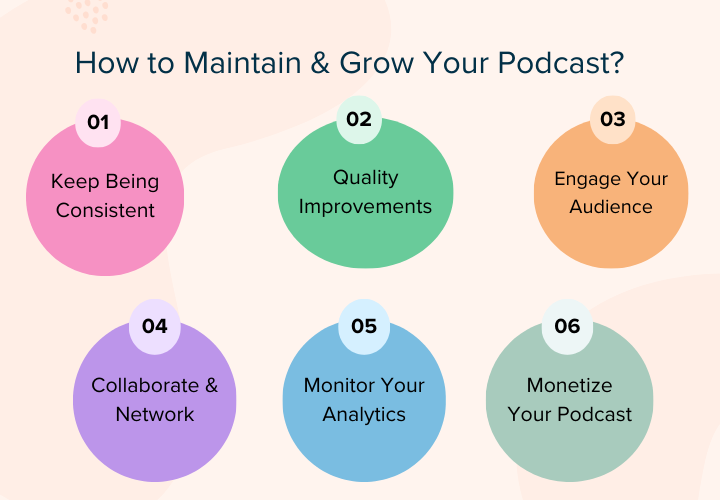
Here are some tips to keep your podcast thriving:
- Consistency: Stick to a regular release schedule to build trust and anticipation among your audience.
- Quality Improvement: Continuously enhance your podcast by upgrading equipment, refining editing skills, and gathering listener feedback.
- Engage with Your Audience: Build a community by responding to comments, seeking input, and creating a dedicated social media group.
- Collaborate and Network: Partner with other podcasters, bloggers, or influencers for guest appearances, interviews, and cross-promotion.
- Monitor Your Analytics: Track performance with analytics tools and use metrics to make informed content and marketing decisions.
- Monetize Your Podcast: Explore sponsorships, merchandise, or donations to generate income and further improve your podcast.
No doubt, maintaining and growing your podcast takes dedication, but with consistent effort and engagement, you can build a successful and thriving podcast that continues to attract and retain listeners.
Popular Podcasts Examples
Are you wondering if there are any popular podcasts that you can look up to for inspiration?
Well, you can check out the following ones.
1. The Joe Rogan Experience
“The Joe Rogan Experience” is a hugely popular podcast hosted by comedian and UFC commentator Joe Rogan.
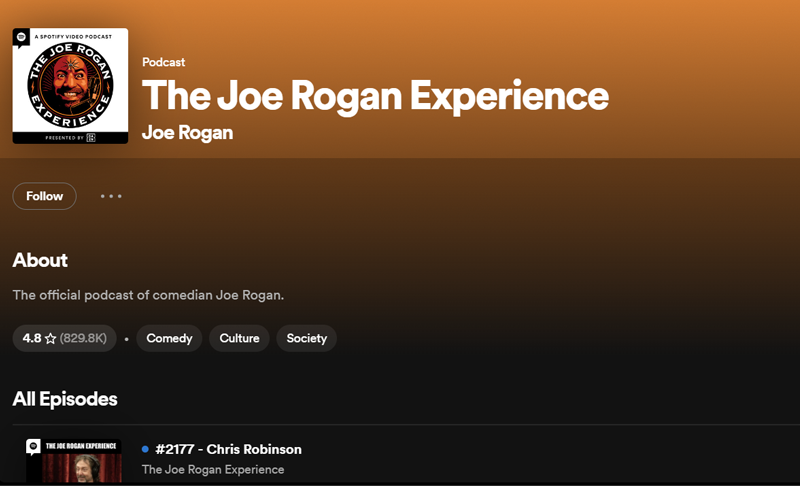
Since its start in 2009, the podcast has featured long, free-form conversations with a wide range of guests, including celebrities, scientists, and politicians. Topics vary widely, from comedy and culture to science and politics.
Joe Rogan’s relaxed interview style fosters engaging and diverse discussions. His ability to connect with guests and cover varied subjects keeps listeners returning. This shows how versatility and authenticity can create a successful podcast.
2. On Purpose with Jay Shetty
“On Purpose with Jay Shetty” is a popular podcast hosted by Jay Shetty, a former monk and motivational speaker.
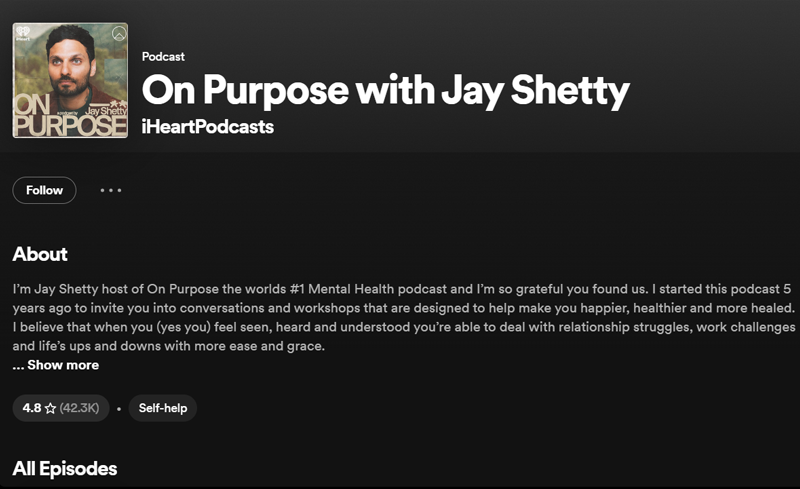
Since its launch in 2019, the podcast has featured conversations with celebrities and experts like Alicia Keys, Kobe Bryant, and Deepak Chopra. They discuss topics like mindfulness, productivity, relationships, and mental health.
Jay Shetty’s unique perspective and ability to simplify complex ideas make his podcast stand out. His genuine connection with guests and calm, reflective approach resonate with listeners. “On Purpose” demonstrates how authenticity and empathy can create engaging content and build a loyal audience.
3. The Daily
“The Daily” is a popular news podcast produced by The New York Times and hosted by Michael Barbaro.
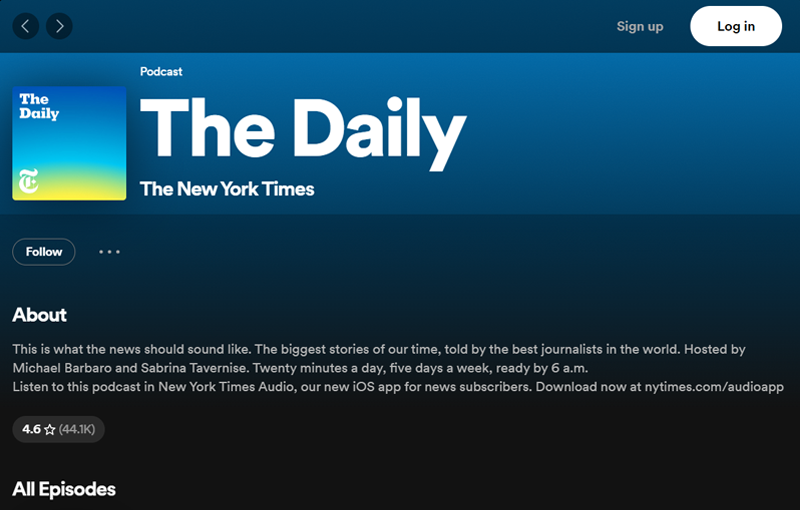
Launched in 2017, the podcast provides listeners with in-depth analysis and insights into major news stories. Each episode, lasting about 20 minutes, features interviews with Times reporters and experts.
Michael Barbaro’s engaging storytelling and clear explanations make complex news topics accessible and interesting. It shows how high-quality journalism and compelling narratives can create an informative and captivating podcast. Further, making it a go-to source for news and analysis.
Frequently Asked Questions on Making a Podcast
Now, we’ll address some frequently asked questions on making a podcast to clear your pathway.
1. Do I need expensive equipment to start a podcast?
No, you don’t need expensive equipment to start a podcast. Many successful podcasters use budget-friendly USB microphones, free recording software like Audacity, and basic headphones. As you grow, you can invest in better equipment to improve your audio quality.
2. How long should my podcast episodes be?
The ideal length of a podcast episode depends on your content and audience. Episodes can range from 15 minutes to over an hour. Aim for a length that allows you to cover your topic thoroughly without losing listener interest. Consistency in episode length also helps set audience expectations.
3. How often should I release new episodes?
Consistency is key. Choose a release schedule that you can maintain consistently, whether it’s weekly, bi-weekly, or monthly. Regularly releasing new episodes helps build anticipation and loyalty among your listeners.
4. How do I choose a topic for my podcast?
Select a topic you are passionate about and knowledgeable in. Consider your target audience and what they might find interesting or valuable. Research popular podcasts in your niche to identify gaps or unique angles you can explore.
5. Do I need a website for my podcast?
Having a website for your podcast is highly beneficial. It provides a central hub for your content, and makes it easier for listeners to find and subscribe to your episodes. Platforms like WordPress.org make it easy to create and manage a podcast website.
6. How do I promote my podcast?
You can promote your podcast through social media and by submitting it to podcast directories like Apple Podcasts, Google Podcasts, etc. Don’t forget to engage with your audience, collaborate with other podcasters, and leverage your existing network to spread the word.
7. How can I monetize my podcast?
There are several ways to monetize your podcast, including sponsorships, listener donations, merchandise sales, and offering premium content. However, focus on growing your audience first, as a larger listener base will attract more monetization opportunities.
Conclusion
And that’s a wrap! We’ve come to the end of our tutorial article on how to make a podcast for free.
Hope you’ve learned how to make a podcast website, preferably with the perfect duo of WordPress and the Seriously Simple Podcasting plugin.
You can definitely make your podcast a top preference among your tribes with a slight effort and focus.
Still, have questions about any of the steps or require any sort of advice? Then, please comment below. We’re happy to help you.
Also, explore our other tutorial articles. Such as how to make a mobile-friendly website and how to set a homepage in WordPress.
Don’t hesitate to share this article with your friends and family looking to make a podcast for free.
Lastly, do follow us on our social media handles Facebook and Twitter to get updates on more useful articles.
